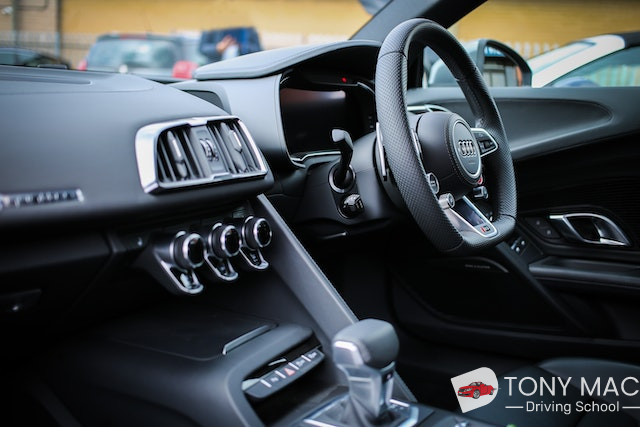Understanding the Practical Driving Test: A Comprehensive Guide
Navigating the road to getting a driver's license can be a challenging job for numerous. Amongst the numerous steps involved, the practical driving test stands as an important turning point. This test evaluates an individual's capability to operate a vehicle securely and competently in real-world conditions. In this short article, we will check out the information of the practical driving test, from its structure and function to preparation pointers and typical FAQs.
What is a Practical Driving Test?
A practical driving test is an examination developed to examine a candidate's driving skills and understanding of traffic regulations and safety protocols. The test normally follows a set format laid out by the governing body of the region-- such as the Department of Motor Vehicles (DMV) in the United States or the Driver and Vehicle Standards Agency (DVSA) in the UK-- ensuring that all prospects satisfy a consistent standard of driving efficiency.
Function of the Practical Driving Test
The primary goal of the practical driving test is to ensure that new chauffeurs possess the skills essential for safe driving. Here are some essential functions:
- Safety: To make sure that all chauffeurs can operate an automobile safely and adhere to traffic laws.
- Assessment of Skills: To evaluate a candidate's ability to manage a variety of driving scenarios, including urban, rural, and highway driving.
- License Qualification: To determine if the applicant is prepared to be accredited to drive separately.
Structure of the Practical Driving Test
The structure of the driving test can differ depending upon the area, however it typically includes the following elements:
1. Pre-Test Checklist
Candidates are typically required to:
- Present Valid Documents: This consists of learner's license, identification, and any other necessary kinds.
- Car Inspection: Some exams consist of a car safety check where the examiner will inquire about the car's safety features (e.g., headlights, brakes, tires).
2. On-Road Driving Skills Assessment
The primary part of the practical driving test generally includes:
- Starting the Vehicle: Safety checks before going into the street.
- Basic Maneuvers: Demonstrating necessary skills such as turning, stopping, and parking.
- Traffic Situations: Navigating various driving circumstances, consisting of combining, lane changes, and carrying out right-of-way guidelines.
- Complex Maneuvers: Performing parallel parking, three-point turns, and reversing securely.
3. Scoring Criteria
Examiners observe candidates on numerous criteria, including however not limited to:
- Adherence to traffic signals and indications
- Use of mirrors and awareness of environments
- Lane discipline
- Handling of the automobile under various conditions (e.g., damp roads)
Sample Evaluation Table
| Proficiency | Points Possible | Points Scored |
|---|---|---|
| Efficient usage of mirrors | 10 | |
| Lane modifications | 15 | |
| Following speed limits | 10 | |
| Parking precision | 20 | |
| Action to signals | 15 | |
| Overall | 70 |
Preparing for the Practical Driving Test
Preparation is the key to passing the practical driving test. Prospects typically take advantage of a mix of practice, education, and planning. Here are some efficient preparation pointers:
1. Take Professional Lessons
- Register in Driving School: Professional instructors can supply important insights and training tailored to the practical driving test.
2. Practice Regularly
- Driving in Various Conditions: Acquaint yourself with different driving environments such as highways, city streets, and rural areas.
3. Mock Tests
- Mimic the Test Conditions: Conducting mock tests with pals, family, or a driving instructor can ease test-day anxiety.
4. Evaluation Road Rules
- Research Study Traffic Laws: Familiarize yourself with local traffic codes, road signs, and driving guidelines.
5. Automobile Familiarity
- Experiment Your Test Vehicle: Make sure you are comfy with the car you will be using for the test.
Typical FAQs About the Practical Driving Test
Q1: How long does the practical driving test last?
A1: The period of the practical driving test usually ranges from 20 to 40 minutes, depending upon local guidelines and the intricacy of the route.
Q2: What should I bring to the test?
A2: Candidates must bring their learner's permit, recognition, evidence of insurance and registration for the test car, and any required documents specified by the licensing authority.
Q3: What occurs if I fail the test?
A3: Most areas permit candidates to retake the practical driving test. Generally, the full report waiting period is implemented, which may differ by jurisdiction.
Q4: Can I utilize a backup video camera during the test?
A4: While the rules differ per area, usually, using backup cams is permitted, but it's essential to likewise inspect over your shoulder.
Q5: Is the driving test simple?
A5: The trouble of the driving test depends upon the individual's comfort level and readiness. Numerous discover it manageable with enough practice.
The practical driving test plays a crucial role in a driver's education journey. By comprehending Driving Course , preparing aptly, and being familiar with the expectations, prospects can increase their confidence and probability of passing. This test not only guarantees that new drivers are capable of running a vehicle safely but also promotes a culture of accountable driving on the roads. By attending to each component thoughtfully, potential drivers can turn their anxiety into guarantee as they approach this substantial milestone.

